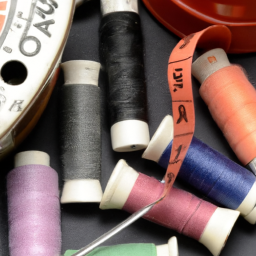
History of Sewing in Fashion
 sewing machine“>
sewing machine“>
Sewing has played an integral role in the evolution of fashion throughout history. From its humble beginnings dating back thousands of years to the modern, technologically advanced techniques used today, sewing has been a crucial skill in creating garments that reflect the ever-changing fashion trends.
Ancient Origins
The origins of sewing can be traced back to the Paleolithic era, where early humans used needles made from bones or animal horns and threads made from plant fibers or animal sinews to sew together animal hides for clothing and protection. This primitive form of sewing laid the foundation for the development of sewing techniques that followed.
Medieval Era and Tailoring
During the Middle Ages, sewing became more refined, and tailoring emerged as a specialized profession. Tailors were highly skilled artisans who sewed garments for nobility and the wealthy. They played a significant role in shaping fashion by creating fitted and intricately designed clothing using techniques such as darts, pleats, and tucks.
The Industrial Revolution
The invention of the sewing machine during the Industrial Revolution revolutionized the fashion industry. In 1846, Elias Howe patented the first practical sewing machine, which marked a turning point in fashion production. The sewing machine enabled faster and more efficient garment production, allowing for mass production and making fashionable clothing accessible to a larger population.
Haute Couture and Sewing Techniques
Haute couture, or high fashion, emerged in the late 19th century, showcasing the exceptional craftsmanship of skilled dressmakers. Sewing techniques such as hand stitching, embroidery, beading, and draping became the hallmark of haute couture garments. These techniques required meticulous attention to detail and were used to create one-of-a-kind pieces for the elite.
Contemporary Sewing and Technology
In the modern era, sewing techniques have continued to evolve with advancements in technology. Computerized sewing machines have made complex stitching patterns more accessible and precise. Additionally, digital design software and 3D printing have introduced new possibilities for fashion designers, enabling them to create intricate designs and prototypes more efficiently.
The Future of Sewing in Fashion
As technology continues to advance, the future of sewing in fashion looks promising. With the rise of sustainable fashion, there is a growing interest in traditional sewing techniques such as hand stitching and embroidery. These techniques not only create unique, artisanal pieces but also promote ethical and eco-friendly practices within the industry.
Overall, sewing has come a long way from its ancient origins to today’s fashion landscape. It has played an essential role in shaping trends and enabling the creation of garments that reflect individuality and style. From the humble needle and thread to the cutting-edge technologies, sewing remains a fundamental skill and art form in the world of fashion.
Article Source: YourWebsite.com




